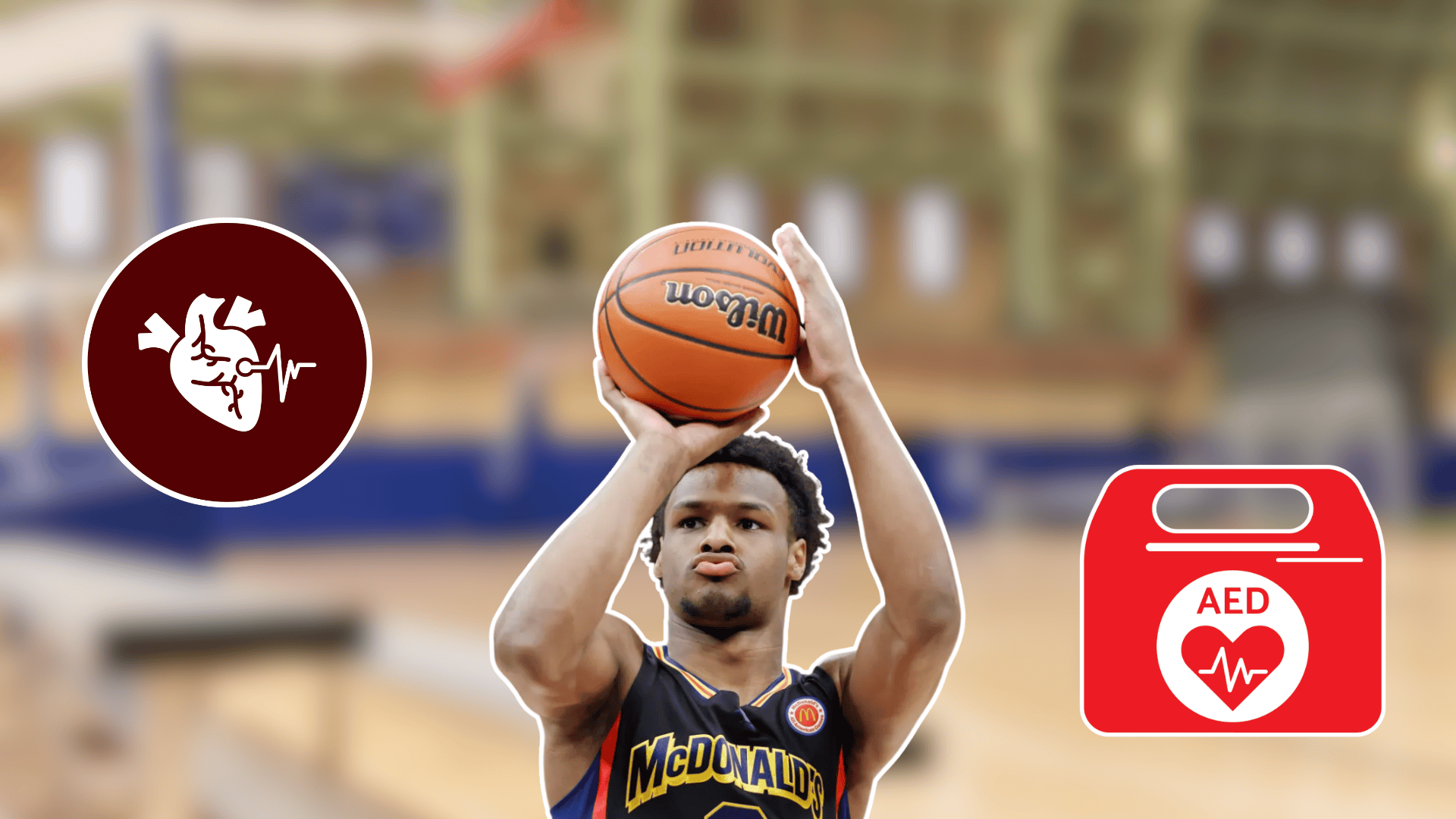On July 24, 2023, Bronny James suffered a cardiac arrest during USC basketball practice. The 18-year-old collapsed suddenly, creating a medical emergency that required immediate intervention from trained staff.
The incident raised important questions about the heart health of young athletes and emergency response protocols.
Many people confused the event with a heart attack, but cardiac arrest is a different and more serious condition that stops the heart completely.
Bronny’s case highlights that heart conditions can affect young, healthy athletes without warning.
His recovery process, return to basketball, and institutional changes provide valuable insights for athletes, families, and sports programs.
Understanding the medical facts, legal considerations, and policy implications helps separate accurate information from speculation about this high-profile cardiac event.
Bronny James Cardiac Emergency at USC
On July 24, 2023, Bronny James suffered a cardiac arrest during USC basketball practice.
The 18-year-old collapsed suddenly while training with his team, creating a medical emergency that required immediate intervention.
Key details of the incident:
- Medical staff performed CPR and used an AED device within minutes
- Emergency services transported him to Cedars-Sinai Medical Center
- The university confirmed cardiac arrest (not heart attack) in an official statement
- The family requested privacy while Bronny remained in stable condition
- Cardiac arrest stops the heart completely, cutting off blood flow to organs
- Heart attacks block blood flow but allow the heart to keep beating
The quick response likely saved Bronny’s life, as most victims survive when treatment begins within four minutes.
This incident highlighted the critical importance of having trained personnel and emergency equipment readily available at sports facilities.
What Caused the Cardiac Arrest?

Doctors diagnosed Bronny James with a congenital heart defect, an abnormal heart structure present from birth that affects the electrical system. The condition was described as serious but treatable.
This type of defect can trigger cardiac arrest, which is different from a heart attack.
Cardiac arrest means the heart stops beating completely, while heart attacks occur when blood flow to part of the heart gets blocked but the heart continues pumping.
“It is an anatomically and functionally important Congenital Heart Defect which can and will be treated. We are very confident in Bronny’s full recovery and return to basketball in the very near future,” the family spokeswoman stated. The family maintained strict privacy while providing updates to the public.
Similar cardiac events have affected other young athletes like NFL player Damar Hamlin (2023) and USC’s Vincent Iwuchukwu (2022).
Both recovered and returned to their sports, demonstrating that a bronny james cardiac event doesn’t automatically end athletic careers.
Life After Cardiac Arrest: Bronny’s Experience
Bronny James left the hospital after three days and received clearance to return to basketball by October 2023. However, the incident created lasting health challenges that continue to affect his athletic performance.
“I get kind of sick easier now, which is kind of weird, but I think it messed with my immune system a little bit,” he told ESPN during the NBA summer league.
The conditioning setbacks from illness created ongoing frustrations for the young athlete.
Recovery required extensive daily management, including medication for the heart, breathing exercises, and lifestyle adjustments.
Bronny has been open about the emotional toll, noting that his daily routines underwent a complete change after the incident.
Key recovery challenges:
- A weakened immune system affects training consistency and conditioning
- Daily heart medication management with strict protocols
- Breathing exercises and a specialized physical therapy routine are required
- Managing post-surgical discomfort with recovery tools
- Emotional adjustment to a completely changed lifestyle and routines
Despite these ongoing challenges, Bronny’s team remains optimistic about his long-term health and future in basketball.
His transparency about the recovery process has helped other young athletes understand that cardiac recovery involves both physical and mental adjustments.
Return to Court After the Arrest
NCAA rules permit athletes to return after cardiac arrest with clearance from heart specialists. Bronny continues playing with full support at the university.
Colleges must provide trained personnel, CPR-certified staff, and emergency equipment like AEDs at sports venues.
HIPAA privacy laws protect athletes’ health information, allowing families like the James family to control what health details become public during crises.
Many people initially wondered if Bronny had a heart attack, but his condition was the more serious cardiac arrest.
The school’s immediate response and proper equipment likely saved Bronny’s life, demonstrating how institutional preparedness can make the difference in cardiac emergencies.
Impact on Sports Safety
The high-profile incident brought widespread attention to heart screening for young athletes and emergency response protocols.
This case has sparked important conversations about athlete safety and policy improvements across multiple areas.
| Area of Impact | Current Changes | Future Implications |
|---|---|---|
| Health Screening | Advocacy groups promote better cardiac screening programs in schools | Proposed mandatory heart screening for all student athletes nationwide |
| Emergency Training | Increased CPR training and AED equipment funding | Improved response protocols could prevent more cardiac deaths in sports |
| Mental Health | Greater awareness of recovery psychological challenges | Better support systems for athletes returning after health incidents |
| Bronny’s Career | Continues basketball with support at the university | NBA draft prospects remain viable with careful health evaluation |
“I got real on top of my routines to get back to where I was,” Bronny shared, describing his commitment to rehabilitation.
His story demonstrates that cardiac arrest doesn’t automatically end professional sports careers when proper care and recovery protocols are followed.
Teams will evaluate his health carefully, but his determination and progress show promise for his basketball future.
The Bottom Line
Bronny James cardiac arrest event highlights that heart conditions can affect any young athlete, regardless of fitness level.
His recovery demonstrates the importance of immediate medical response and proper emergency equipment at athletic facilities.
The incident sparked necessary conversations about mandatory cardiac screening for student athletes and improved emergency protocols.
While Bronny continues his basketball career with medical support, his transparency about recovery challenges helps other athletes facing similar health issues.
His story proves that cardiac arrest doesn’t have to end athletic dreams when proper medical care is available.
The policy discussions and emergency preparedness changes triggered by this case will benefit countless young athletes in the future.
What are your thoughts on cardiac screening requirements for young athletes? Share your experiences in the comments below.






































